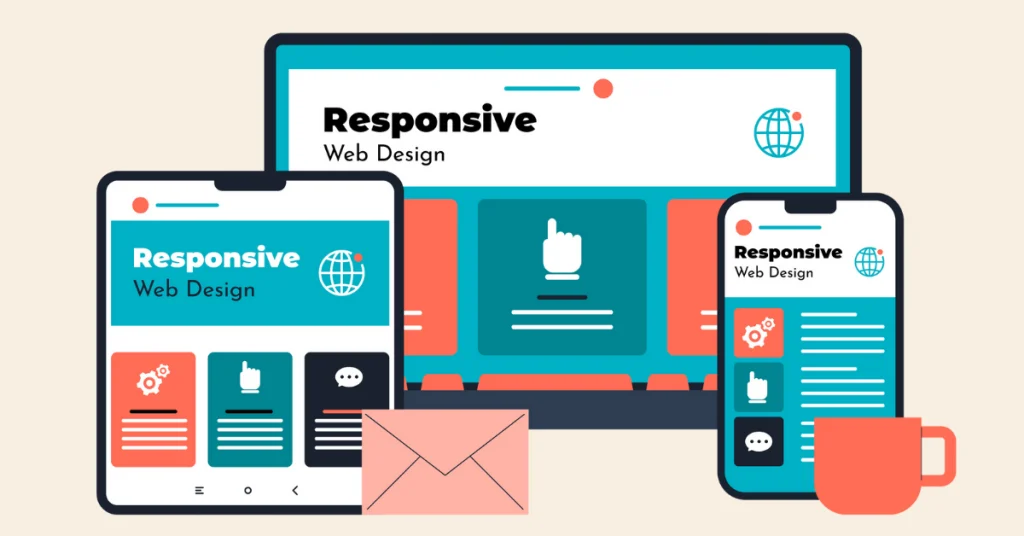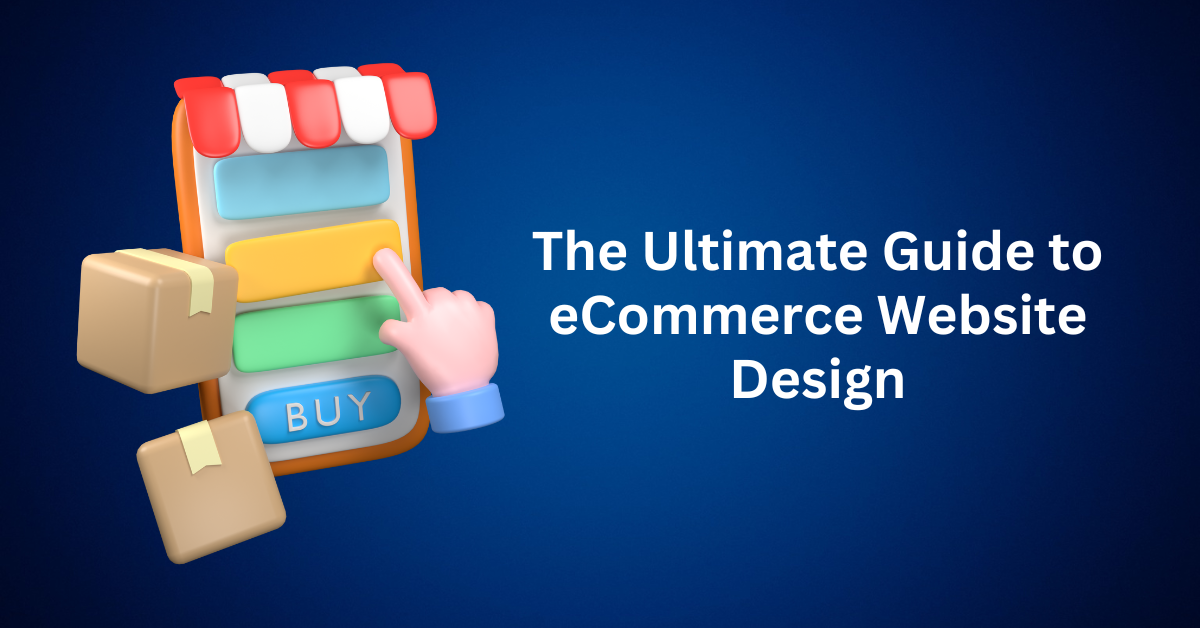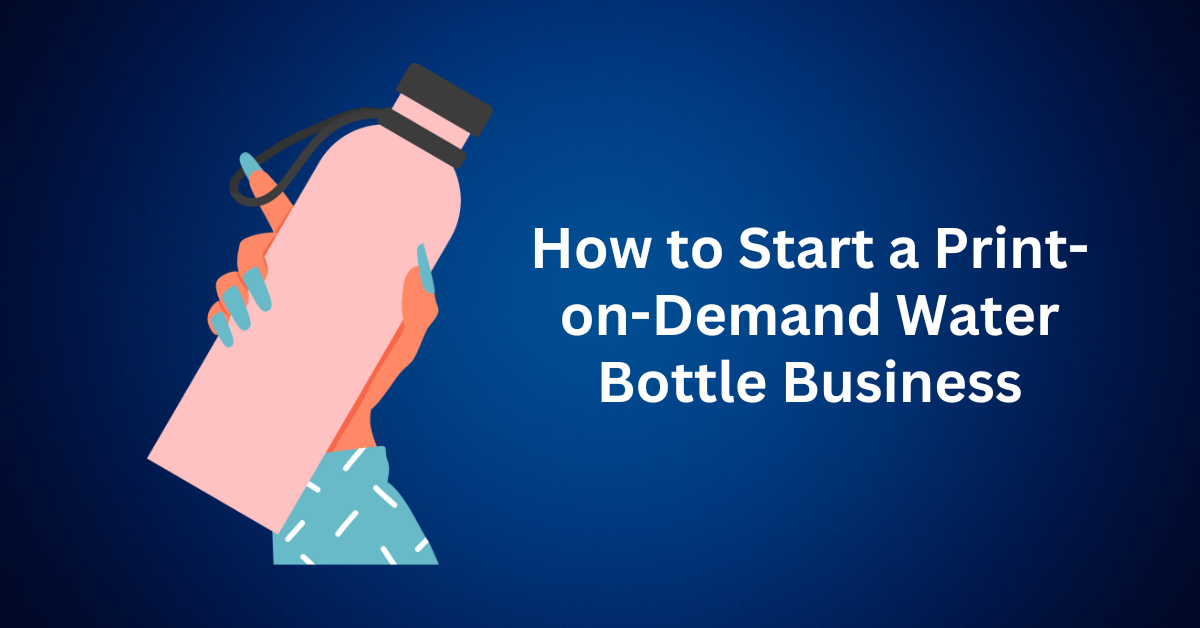Building a standout eCommerce website is just as essential as designing, decorating, and managing a physical store. A well-crafted online presence is key to attracting and retaining customers.
In this guide, we’ll explore the crucial design elements that make eCommerce websites successful, the importance of optimizing site performance, the benefits of search engine optimization (SEO), and the need for continuous analysis to improve your online store’s effectiveness.
Sign up for a free Shopify trial
Table of Contents
ToggleWhy is Design Crucial for an eCommerce Website?

The design of your eCommerce website plays a pivotal role in creating a powerful first impression. This first impression directly influences whether visitors engage with your online business or leave within seconds. Your website serves as the digital storefront for your brand. Its effectiveness in communicating your message and engaging users can make or break your business. A well-designed website builds trust, enhances user experience, and ultimately drives conversions.
1. Building Trust and Credibility of the eCommerce Website
Trust and credibility are essential in eCommerce, particularly because customers often make purchasing decisions without interacting with your business in person. Therefore, a polished and professional website design plays a crucial role in reassuring users that your brand is both legitimate and reliable. Moreover, considering the rapid growth of the retail eCommerce market, which is projected to surpass $6 trillion in sales in 2024, standing out in such a competitive space demands a site that is not only trustworthy but also visually appealing.
2. Combining Aesthetics with Functionality of the eCommerce Website
While the aesthetic appeal of your website is important, design goes beyond just looking good—it must also function seamlessly. Each element of your site should work together to highlight your products, convey your brand’s values, and make the shopping experience as straightforward as possible. For instance:
- Clear Navigation: Ensure users can easily find what they’re looking for with intuitive menus and category structures.
- Product Display: Use high-quality images, well-organized product pages, and compelling descriptions to showcase your offerings effectively.
- Responsive Design: Guarantee your site looks and functions great across all devices, especially mobile, which accounts for a significant portion of eCommerce traffic.
3. Prioritizing Customer Experience
User experience (UX) is the backbone of a successful eCommerce website. A site that’s easy to navigate, quick to load, and free of technical glitches encourages users to explore and purchase your products. Elements such as a smooth checkout process, fast page load speeds, and accessible customer support enhance overall satisfaction and reduce cart abandonment rates.
4. Encouraging Repeat Visitors and Recommendations
A visually appealing, user-friendly website not only attracts first-time visitors but also encourages repeat visits and word-of-mouth recommendations. Customers who have a positive experience on your site are more likely to return for future purchases. They are also more likely to recommend your business to friends and family. Over time, this helps boost customer loyalty. Additionally, it reduces your dependency on expensive advertising to acquire new customers.
5. Standing Out with a Unique Design
In a crowded marketplace, a distinctive design can help your website stand out. It’s not just about being functional and attractive; a unique and memorable design also aligns your site with your brand identity. This makes it easier for customers to recognize and recall your business. Additionally, incorporating consistent colour schemes, typography, and visual elements that reflect your brand values enhances the user experience. It also strengthens customer connections. Ultimately, this fosters long-term trust and loyalty.
By combining aesthetic appeal with seamless functionality, you can build trust, prioritize user experience, and ensure your site remains competitive in the ever-expanding world of online retail.
Key Elements of eCommerce Website Design
A well-designed eCommerce website isn’t just visually appealing; it ensures a smooth and intuitive shopping experience for users. The following key elements are critical for creating an engaging, functional, and successful eCommerce website.
Navigation and Menu Structure of the eCommerce Website
Clear and intuitive navigation is the backbone of a successful eCommerce website, as it ensures users can easily move through pages and quickly find the products they’re looking for. A well-organized navigation menu not only enhances the user experience but also encourages longer visits and increased conversions.
To achieve this, it’s important to use a logical hierarchy that groups related items and categories together, which makes it easier for customers to navigate. Additionally, keeping menus simple and uncluttered with a minimalist design, focused on the essentials, improves usability. A prominently featured search bar is essential, allowing users to quickly search for specific products. Dropdown menus are also highly valuable for efficiently organizing large inventories.
Furthermore, incorporating features like breadcrumb navigation helps users track their location on the site and easily backtrack when necessary. Finally, ensure that category and subcategory labels are clear and relevant to your target audience, making the navigation feel truly intuitive.
Homepage Design of the eCommerce Website
The homepage of your eCommerce site is often the first interaction a visitor has with your business, making it the digital face of your brand. It should capture attention, convey your brand story, and guide users toward making a purchase.
Key elements to include are a visually striking hero section with high-quality images, videos, or GIFs, complemented by a strong call-to-action (CTA) to entice users. Highlight key products such as bestsellers, new arrivals, or seasonal favourites to engage customers and encourage browsing.
Multiple CTAs, strategically placed on the homepage, can guide users to specific actions, such as shopping categories or signing up for emails. Easy access to product categories helps streamline the shopping experience. An “About Us” section builds trust by sharing your brand’s story, values, and mission. A clear FAQ or How-To section provides answers to common questions or offers product-related guidance.
Pro Tip: Use the homepage to emphasize your unique selling points, such as free shipping, customer reviews, awards, or special promotions, to stand out from competitors.
Product Pages of the eCommerce Website
Product pages are crucial in the decision-making process, as they provide customers with all the information they need before committing to a purchase. To maximize conversions, these pages should strike a balance between functionality and aesthetics.
Key elements include high-quality images and videos, which showcase your products from multiple angles, close-ups, and lifestyle shots. Detailed product descriptions are also essential—these should be clear, engaging, and consistent, emphasizing key features, benefits, and specifications. Additionally, pricing, availability, and any discounts should be prominently displayed to avoid confusion.
User reviews and ratings are significant in building trust and helping customers make informed decisions. Furthermore, adding related product recommendations can encourage cross-selling, boosting the average order value. Finally, ensure relevant tags are used to simplify the process of searching and filtering products for users.
Pro Tip: Invest in professional photography or set up a home studio to ensure consistent, high-quality product images that align with your brand.
Shopping Cart and Checkout Process of the eCommerce Website
A smooth and user-friendly shopping cart and checkout process is essential for reducing cart abandonment and boosting conversions. To achieve this, the process should be simple and efficient, guiding users toward completing their purchase with minimal friction.
First, ensure that the cart summary is displayed, showing selected items, prices, and totals upfront. Offering a variety of payment options, such as credit cards, PayPal, or digital wallets, accommodates different preferences and makes the process more convenient. Additionally, streamline the checkout process by minimizing the number of steps, enabling users to complete their purchases quickly and easily.
To eliminate any uncertainties, clearly display shipping and return information. Best practices also include offering guest checkout, which allows customers to purchase without creating an account, and using progress indicators during checkout to show users how many steps are left in the process.
Secondary Pages of the eCommerce Website
Secondary pages on your website play a critical role in providing transparency, building trust, and offering additional ways for customers to interact with your brand. These pages ensure that users have the necessary information to make informed decisions and feel confident in their purchase.
Key secondary pages include the “Contact Us” page, offering multiple ways for users to reach out, such as email, phone, or live chat. The “Terms and Conditions” page outlines the legal details of using your website. The “Privacy Policy” page explains how customer data is collected, stored, and protected. Additionally, providing links to your brand’s social media profiles encourages users to engage with you on platforms where you’re active.
Pro Tip: Use professional templates for your “Terms and Conditions” and “Privacy Policy” pages to ensure legal compliance and accessibility for all users.
Each element, from intuitive navigation to visually appealing product pages and a streamlined checkout process, is crucial for ensuring a positive user experience and driving sales. By prioritizing these key elements, you’ll create a site that attracts visitors and converts them into loyal customers.
UI/UX Design and Mobile Optimization for an eCommerce Website

User Interface (UI) and User Experience (UX) are critical for creating an eCommerce website that is both visually appealing and easy to use. When these elements are combined with effective mobile optimization, they ensure a seamless shopping experience across devices. This improves user satisfaction and drives conversions.
UI Design: Enhancing the Visual Appearance
User Interface (UI) design focuses on the visual appeal and layout of your eCommerce website, ensuring that all elements come together to create a seamless, professional, and aesthetically pleasing experience for users. A well-designed UI enhances user satisfaction and keeps customers engaged, ultimately leading to better conversion rates.
One of the most important aspects of good UI design is consistency in design elements. To achieve this, maintain uniformity in colours, fonts, and button styles across your website. This helps establish a cohesive and polished look, reinforcing your brand identity. Using a limited colour palette and consistent branding elements ensures that visitors immediately recognize your brand and feel confident navigating your site.
Another critical element is fast loading times. Slow pages can frustrate users and lead to high bounce rates, so it’s essential to ensure that all pages load quickly. Optimizing images by compressing them without sacrificing quality, minimizing excess code, and using caching strategies can significantly improve your site’s speed. Fast loading times contribute to a smoother user experience, keeping customers on your site longer.
Intuitive navigation is another key factor in good UI design. Clear and straightforward menus, organized with logical hierarchies, help users find what they need with minimal effort. Incorporating features like search bars and breadcrumb trails allows users to easily track their location on the site and find specific products or pages quickly, enhancing overall usability.
Finally, focusing on accessible text and colour schemes ensures that your site is user-friendly for everyone, including those with visual impairments. Choose readable typography and select colour combinations that provide sufficient contrast, making it easier for all users to read content. Additionally, ensure that text remains legible even on smaller screens, such as mobile devices, to create a more inclusive and accessible browsing experience.
UX Design: Enhancing the Overall User Experience
Key elements of a good UX design are essential for ensuring that users have a positive experience on your website. One of the most important aspects is clear and compelling calls to action (CTAs). Effective CTAs guide users toward desired actions, such as making a purchase or signing up for a newsletter. These well-placed prompts not only help users navigate the site but also play a crucial role in driving conversions, ultimately contributing to the success of your online business.
Another critical element of good UX design is providing useful and valuable content. By offering relevant, informative, and engaging content, you can enhance the user experience and encourage visitors to spend more time on your site. Whether it’s blog posts, product descriptions, or instructional guides, content that meets the needs of your audience helps build trust and keeps users engaged, increasing the likelihood of return visits and conversions.
Business and brand credibility also play a vital role in user experience. Establishing credibility through trust signals like customer reviews, testimonials, and secure payment options helps build confidence in your brand. When users feel reassured about the authenticity and security of your website, they are more likely to complete transactions and recommend your business to others.
Lastly, personalization and engagement are key to fostering long-term relationships with users. Tailoring the user experience based on individual preferences and behaviours increases engagement and satisfaction. Personalized product recommendations, content, and experiences make users feel valued and understood, leading to higher satisfaction levels and greater loyalty to your brand. Together, these elements create a cohesive and enjoyable user experience that not only attracts visitors but also encourages them to take meaningful actions on your site.
Mobile Optimization: Designing for a Mobile-First Audience
With a significant portion of eCommerce traffic coming from smartphones, mobile optimization is no longer optional—it’s essential for reaching and converting your audience.
Best Practices for Mobile Optimization:
- Responsive Design
- Ensure your website layout adjusts seamlessly to different screen sizes, from smartphones to tablets and desktops.
- Test your site across multiple devices to guarantee functionality.
- Touch-Friendly Design
- Use large, tappable buttons and avoid small links that can be difficult to click on smaller screens.
- Design forms with mobile users in mind by including autofill features and larger input fields.
- Readable Text and Simple Layouts
- Use font sizes and styles that are easy to read on mobile screens.
- Avoid cluttered designs; prioritize simplicity and clear hierarchies of information.
- Mobile-Specific Features
- Enable features like one-click checkout, mobile wallets (e.g., Apple Pay or Google Pay), and geolocation for personalized shipping options.
- Use sticky navigation bars or CTAs that remain accessible as users scroll.
By focusing on UI/UX design and mobile optimization, you can create an eCommerce website that not only looks great but also delivers an exceptional shopping experience across all devices. This approach ensures your business remains competitive in today’s mobile-first, user-centric digital landscape.
Sign up for a free Shopify trial
Mastering Search Engine Optimization for Success
Search Engine Optimization (SEO) is a powerful strategy to enhance your website’s visibility and relevance on search engines like Google. A well-optimized website not only drives organic traffic but also converts visitors into loyal customers, boosting sales and brand credibility.
Search engines use complex algorithms to evaluate how well a website aligns with a user’s search intent and the site’s overall reliability. By implementing effective SEO practices, your online store can climb search rankings, triggering a snowball effect of increased visibility and engagement.
Core Elements of SEO for Your eCommerce Website
- Keyword Optimization
Keywords are the foundation of SEO. Use tools like Semrush, Ahrefs, or eRank to identify high-performing, relevant keywords for your niche. Strategically incorporate these keywords across your website, including product pages, blog posts, and metadata, ensuring they align with searcher intent. - Quality Content
Content is king when it comes to SEO. Publish valuable, engaging, and original content that answers your audience’s questions or solves their problems. A blog, for example, can serve as a repository of guides, tutorials, and insights, allowing for natural keyword placement and improving your site’s value. - Meta Tags and Descriptions
Well-crafted meta titles and descriptions play a crucial role in ranking and click-through rates. Ensure these are clear, concise, and optimized for both desktop and mobile users. Don’t forget to include your target keywords naturally. - Backlinks
Backlinks from authoritative websites signal to search engines that your site is trustworthy. Collaborate with industry-related websites, guest post on relevant blogs, or share your content with influencers to secure high-quality backlinks. Internally, link to reputable external sources to further establish credibility.
On-Page and Off-Page SEO Strategies for Your eCommerce Website
SEO success depends on a balanced combination of on-page and off-page optimization techniques:
1. On-Page SEO
- Optimize product descriptions, headlines, and blog posts by including target keywords in natural, reader-friendly ways.
- Focus on technical elements like URL structures, mobile responsiveness, and site speed to enhance user experience.
- Use internal linking to guide users through your website and keep them engaged.
2. Off-Page SEO
- Build relationships with other brands, influencers, or bloggers in your niche to earn backlinks.
- Actively promote your website content on social media platforms to increase exposure.
- Link to authoritative, high-traffic websites within your content to strengthen your site’s reliability.
Advanced SEO Techniques for Long-Term Growth
To take your SEO efforts to the next level, incorporate advanced strategies like:
- Schema Markup: Implement structured data to help search engines understand your content better. This can enhance how your pages appear in search results with rich snippets such as star ratings, pricing, and availability.
- Local SEO: Optimize for local searches by including your business location in keywords, creating a Google My Business profile, and gathering positive customer reviews.
- Voice Search Optimization: With the rise of voice-activated searches, focus on conversational keywords and long-tail phrases that mimic natural language queries.
Good SEO doesn’t just increase website traffic—it builds long-term trust with your audience. As your site climbs in Google rankings, you’ll attract a larger, more engaged audience, leading to higher conversion rates and a stronger digital presence. With continuous effort and adaptation to search engine trends, SEO can turn your online store into a sustainable success story.
Analyze and Adapt Your eCommerce Website for Success.
Website analysis is an ongoing process that allows you to refine and enhance your site’s performance over time. By leveraging analytics tools, testing different design elements, and gathering user feedback, you can identify opportunities for improvement and adapt to changing trends. This proactive approach is key to optimizing your website for both user experience and business goals.
Key Methods for Effective Website Analysis
Google Analytics is an essential tool for gaining insights into your website’s traffic, user behaviour, and conversion rates. Firstly, it allows you to track which pages attract the most visitors, while also helping you identify where users drop off in their journey. This valuable information enables you to optimize your website for better engagement. Moreover, by monitoring seasonal traffic fluctuations, you can align your marketing strategies with periods of high demand, ensuring that you capitalize on peak traffic times. In addition, tracking conversion paths provides you with a deeper understanding of how visitors become customers, allowing you to refine your sales process accordingly.
A/B testing, also known as split testing, is a powerful method for optimizing your website’s design and functionality. Essentially, this process involves creating two versions of a page with slight variations—such as different headlines, button placements, or color schemes—to determine which performs better. By testing critical elements, such as call-to-action buttons, product page layouts, or checkout processes, you can gain valuable insights into what resonates most with your audience and drives conversions. Furthermore, tools like Optimizely or Google Optimize can help streamline the testing process, offering detailed analysis of the results to guide your optimization efforts.
Direct feedback from your audience is an invaluable resource for understanding what’s working well and where improvements are needed. To collect insights, you can use surveys, feedback forms, or pop-up questionnaires that ask users about their experience on your site. In addition, monitoring reviews and social media mentions provides further opportunities to identify recurring pain points and areas for improvement. Moreover, keeping open communication channels, such as live chat or professional email support, demonstrates to customers that you value their input and are committed to enhancing their experience.
Continuous Improvement Through Data
Effective website analysis involves more than just monitoring metrics—it requires consistent action to improve and adapt. Combine multiple strategies for a well-rounded approach:
- Trend Analysis: Use tools like Google Trends to stay ahead of industry shifts and adjust your website’s content and design accordingly.
- Heatmaps: Platforms like Hotjar can reveal where users are clicking, scrolling, or dropping off, helping you identify areas for design improvement.
- Performance Metrics: Regularly measure site speed, mobile responsiveness, and overall usability to ensure your site meets modern standards.
Testing and Evolving Your eCommerce Website
Experimentation is key to discovering what resonates with your audience:
- Template Testing: Try different website templates or layouts to find a design that maximizes engagement.
- Design Iterations: Small changes, like adjusting font sizes, improving navigation, or enhancing visual hierarchy, can make a big difference in user satisfaction.
- Content Variants: Experiment with different headlines, images, or videos to see which generates the most clicks and conversions.
Sign up for a free Shopify trial
Tools and Platforms for eCommerce Website Design
Creating a successful eCommerce website requires selecting the right platform that aligns with your business needs. There are two main types of eCommerce platforms to consider: comprehensive (all-in-one) platforms and standalone (self-hosted) platforms. Each option offers unique benefits depending on your technical expertise, customization needs, and business goals.
All-in-One eCommerce Platforms
All-in-one eCommerce platforms are user-friendly solutions designed to simplify the process of building and managing an online store. They often include features such as:
- Customizable design templates to create a professional-looking website.
- Integrated payment processing for seamless transactions.
- Inventory management tools to track and organize your products efficiently.
Popular All-in-One Platforms:
- Shopify
- Known for its ease of use and extensive app ecosystem.
- Offers a wide variety of templates and themes, making it suitable for businesses of all sizes.
- Includes built-in SEO features and analytics to help optimize performance.
- BigCommerce
- Designed for scaling businesses with advanced tools for managing large inventories.
- Provides multi-channel selling capabilities, allowing you to list products on platforms like Amazon and eBay.
- Wix
- Offers drag-and-drop website building tools and intuitive eCommerce features.
- Suitable for beginners who want an affordable and flexible option.
Standalone (Self-Hosted) eCommerce Platforms
Standalone platforms provide maximum flexibility and control, allowing you to customize every aspect of your website. However, they often require more technical expertise to set up and maintain. These platforms are ideal for businesses that want advanced customization or already have web development resources.
Popular Standalone Platforms:
- WooCommerce
- A plugin for WordPress, making it a highly customizable and popular choice for small to medium-sized businesses.
- Supports a wide range of extensions for payment gateways, shipping, and SEO.
- PrestaShop
- Open-source platform offering extensive customization options for advanced users.
- Ideal for businesses looking to tailor their online store to specific needs.
Sign up for a free Shopify trial
Common Mistakes to Avoid When Building an eCommerce Website

Building a successful eCommerce website involves more than just setting up a storefront. To ensure your site attracts and retains customers, it’s crucial to avoid these common mistakes that can harm user experience and conversions.
1. Cluttered and Confusing Structure
A cluttered website or overly experimental design can overwhelm visitors and discourage them from exploring your eCommerce store. When users struggle to find what they’re looking for, they’re more likely to leave without making a purchase. To avoid this, focus on a clean and straightforward layout that guides users naturally toward key actions like browsing products, reading descriptions, and completing purchases. Utilize white space effectively to make your design visually appealing and easy to navigate. Ensure that essential elements, such as product categories, search functionality, and call-to-action buttons, are prominently displayed and intuitive to use.
2. Poor Optimization
A poorly optimized website can result in slow performance, leading to frustrated users and lost sales. To deliver a smooth user experience, prioritize website optimization by compressing images to reduce load times, implementing browser caching to store frequently accessed files, and using a Content Delivery Network (CDN) to improve speed for visitors across different regions. These practices not only enhance user satisfaction but also positively impact your search engine rankings. Regularly monitoring your website’s performance ensures it remains fast and efficient, even as your content or traffic grows.
3. Hard-to-Understand Navigation
Complex or confusing navigation can be a major obstacle for potential customers trying to browse your website. Visitors should be able to find what they’re looking for quickly and easily, without needing to hunt through complicated menus or links. To achieve this, design a navigation system that is simple, clear, and intuitive. Use descriptive labels for menu items and limit the use of dropdown menus to avoid overwhelming users. Include a prominent search bar with autocomplete suggestions to help visitors locate products more efficiently. Testing your site’s navigation with real users can reveal problem areas and help you make necessary adjustments for a seamless browsing experience.
4. Ignoring SEO
Neglecting SEO can severely limit your eCommerce website’s visibility, ultimately making it harder for potential customers to discover your store. That’s why Search Engine Optimization should be a priority from the very beginning. Not only does it help drive consistent organic traffic, but it also improves your search engine rankings over time.
To start optimizing your site, focus on incorporating relevant keywords into product descriptions and metadata. In addition, add descriptive alt text to all images to improve both accessibility and visibility. Furthermore, create high-quality content such as blog posts or guides, which can attract search engine attention and position your store as a trusted resource.
It’s important to remember that SEO is not a one-time task. Rather, it requires regular updates and adjustments to remain competitive as search algorithms continue to evolve.
5. Slow Loading Times
Slow loading times are one of the fastest ways to lose potential customers. If your website takes more than a few seconds to load, visitors are likely to abandon it and look elsewhere. To keep users engaged, ensure your site loads quickly by compressing large images, enabling caching to speed up data retrieval, and choosing a reliable hosting provider that can handle high traffic. Regularly test your site’s speed using tools like Google PageSpeed Insights or GTmetrix, and address any identified issues promptly. Fast-loading websites not only improve user experience but also contribute to better search engine rankings.
Start Your eCommerce Business..
Launching an eCommerce business has never been easier, thanks to Printify. Once you’ve perfected your eCommerce website design, you’ll need the right products to bring your store to life. Printify offers a seamless solution for selling high-quality custom products online without worrying about inventory or upfront costs. With its intuitive platform, you can design, produce, and ship white-label products while focusing on growing your brand. Here’s how to get started:
1. Sign Up for Free
Begin by creating a free Printify account, which grants you access to an extensive range of customizable products and easy-to-use print-on-demand design tools. This step is quick and hassle-free, so you can dive straight into designing products that reflect your brand’s unique identity.
2. Select Products and Customize Your Designs
Explore Printify’s vast Catalog, featuring everything from t-shirts and hoodies to mugs, phone cases, and more. Once you’ve chosen the products that align with your niche, use Printify’s Product Creator to apply custom designs. Whether it’s your logo, a trendy graphic, or a bold statement, you can tailor each product to fit your brand’s aesthetic and captivate your target audience.
3. Decide Where to Sell
Next, integrate Printify with your preferred eCommerce platform to start listing and selling your products. Printify offers seamless integration with major platforms like Shopify, WooCommerce, and BigCommerce, making it easy to manage your online store. Simply sync your customized products to your website, and they’ll be ready for customers to purchase.
4. Relax While Printify Takes Care of the Rest
Once your store is live, Printify handles the heavy lifting. Their vast network of trusted production partners manages the printing and shipping of each order directly to your customers. This eliminates the need to handle inventory or logistics, allowing you to focus on marketing your products, refining your website, and scaling your eCommerce business.
By partnering with Printify, you can seamlessly combine a professional eCommerce website design with a wide product selection. As a result, you create a strong foundation for building a successful online business. What’s more, with no upfront costs involved, you’re free to focus entirely on growing your brand. Ultimately, Printify serves as the ideal platform to bring your eCommerce vision to life.
Final Thoughts: The Ultimate Guide to Ecommerce Website Design
Building a thriving eCommerce store requires thoughtful design, effective optimization, and ongoing analysis. To begin, start by choosing a template that resonates with your brand’s vision. Additionally, explore successful online stores for inspiration. By observing how top eCommerce sites structure their design and user flow, you can craft a look and aesthetic that aligns with your goals.
Selecting the right eCommerce platform or website builder is equally crucial. Look for one that fits your budget and creative needs. Moreover, it should offer flexibility with built-in tools or plug-ins to enhance functionality. Whether you prefer Shopify’s simplicity, WooCommerce’s customization, or Squarespace’s all-in-one solutions, be sure to choose the option that enables you to achieve your vision easily.
When designing your site, prioritize simplicity and an intuitive user interface. A straightforward layout helps guide customers through the shopping process, from browsing products to completing their purchases. In addition, pair this with robust SEO techniques to drive organic traffic to your site. Optimize product descriptions, metadata, and images, and ensure fast page loading speeds to create a smooth shopping experience for users.
By combining thoughtful design, user-friendly functionality, and continuous improvement, you can create an eCommerce store that attracts, engages, and retains customers for long-term success.
Sign up for a free Shopify trial.
Discover the essential elements of ecommerce website design. Learn how to create an engaging, user-friendly site that drives sales.



